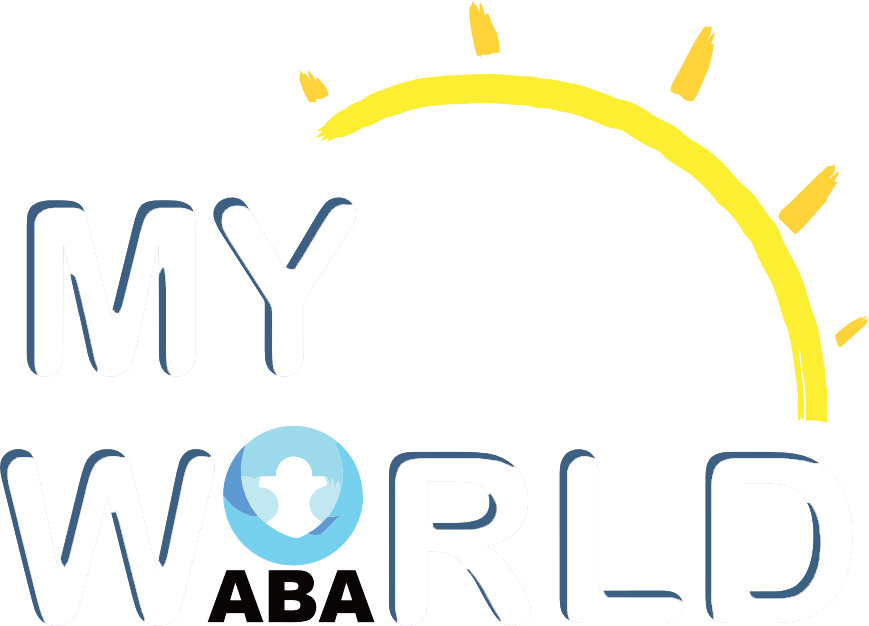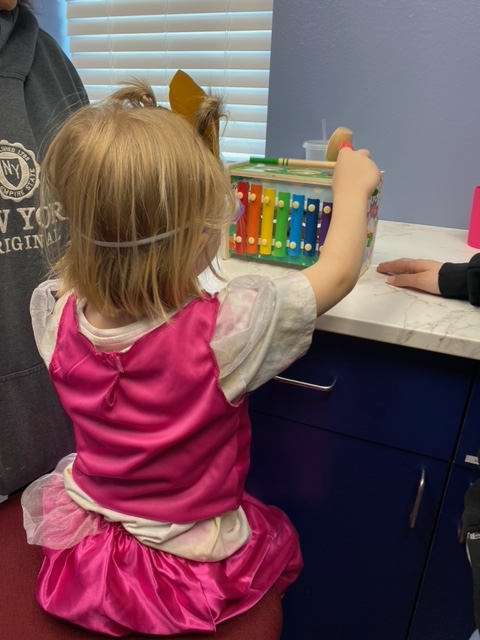Everyone at My World ABA incorporates kindness into everything we do. We believe every child deserves the chance to reach their full potential, which is why we provide comprehensive autism services tailored to your child’s unique needs.
Our approach is based on the idea that learning should be fun and engaging. That’s why we use play-based methods to help your child develop essential skills while building confidence and independence as part of ABA therapy in Springfield, MO.
Together, we can help your child thrive in an environment where they can live and grow at their own pace.
Keep reading our complete guide to ABA therapy in Springfield, MO. If you have any questions for us, feel free to reach out! We also have offices in Ozark and Joplin.
Table of Contents
Core Principles of ABA Therapy
The overall goal of ABA therapy is to understand a child’s behavior and then change that behavior in small, gradual ways to foster their independence, social skills, and family skills.
Everyone on our staff starts with the premise that every child we meet is unique. ABA therapy builds on this uniqueness. The core principles of ABA therapy include positive reinforcement to foster learning and reduce challenging behaviors.
Our practice uses data-driven approaches to look closely at a child’s behaviors. When needed, we make small and systematic adjustments based on a child’s individual needs. These small adjustments are made to gradually progress and develop essential skills.
We utilize four main ways to achieve positive outcomes using ABA therapy in Springfield, MO.
Behavior Analysis
Behavior analysis involves observing a person’s actions, identifying the triggers that lead to those behaviors, and understanding the consequences that reinforce or discourage them. Therapists analyze these behaviors and create targeted adjustments (called “interventions”) to help individuals improve their skills, develop new behaviors, or reduce unwanted behaviors.
Example of Behavior Analysis
Imagine a student who often interrupts a teacher in class. A therapist might observe that the student interrupts more frequently when they are feeling frustrated or when they haven’t had a chance to participate in the discussion. Our therapists can create a plan to address the issue.
For example, the teacher might start by giving the student more opportunities to speak during class, or they might teach the student how to raise their hand and wait to be called on. The therapist would then monitor the student’s progress and make adjustments to the plan as needed. This is just one of many practical ways ABA therapy can help create positive behavior changes.
Positive Reinforcement
Positive reinforcement is the key to everything we do as part of ABA therapy in Springfield, MO. It focuses on encouraging desired behaviors by rewarding them. We believe that praise or a reward will encourage your child to create positive behavior again. Positive reinforcement is based on the principle that people are more likely to repeat behaviors that lead to favorable outcomes. It’s a powerful tool in shaping behavior, whether in children learning new skills, improving their academic performance, or working on social interactions.
Example of Positive Reinforcement
For instance, a student struggles with completing homework. A parent might offer extra play time, a favorite snack, and/or praise when their child completes homework. We believe, and evidence backs this up, that the student is more likely to complete their homework in the future. The extra playtime or praise acts as positive reinforcement, making the student feel good about their accomplishment and motivating them to continue the behavior.
Over time, this consistent reinforcement can help the student develop a strong habit of completing homework without needing reminders or reinforcement. Positive reinforcement in ABA therapy is about finding what motivates an individual and using that to encourage positive change, helping them achieve their goals and build confidence in their abilities. Because every child is unique, positive reinforcement is also unique.
Functional Behavior Assessment
The goal of a functional behavior assessment (FBA) is to identify the specific factors that trigger and maintain a behavior, such as certain circumstances, social interactions, or internal states of mind.
Our ABA therapists analyze these patterns and can determine how this behavior serves the child, whether it’s seeking attention, needing assistance, avoiding a task, or gaining access to something desirable. Understanding the function of a behavior is essential for creating effective ways to address the root cause rather than just the symptoms.
Example of a Functional Behavior Assessment
Think about a pre-teen who frequently refuses to do household chores, like taking care of the family pet in the afternoon. Parents notice that this behavior often occurs when their child is engaged in an activity they enjoy, such as playing video games or talking to friends. A therapist might conclude that the child wants to continue their enjoyable activity and avoid interruption of the activity they like, so they don’t do their chores.
The FBA process would involve gathering data on the situations in which the refusal occurs, the consequences that follow, and any patterns in behavior. The assessment might reveal that the child is avoiding chores because they see them as a nuisance or because they know a parent will eventually do the task for them.
With this information, our therapists can work with the family to develop a strategy that addresses the underlying motivation. For example, the parents might establish a routine where the teen is allowed to continue their activity for a few extra minutes if they commit to doing the chore afterward or create a reward system where completing chores leads to extra privileges.
Once we identify the function of the behavior, the FBA helps our therapists create a long-term solution that not only reduces resistance but also encourages cooperation with others.
Data Collection & Analysis
Data collection involves systematically recording information about an individual’s behaviors, including how often they occur, under what conditions, and what consequences follow them.
This data provides a clear, objective picture of behavior patterns, allowing therapists to identify trends, track progress, and make informed decisions. Analysis of this data is crucial for understanding the effectiveness of an intervention. If a behavior is changing in the desired direction, the data confirms that this method is working. If not, the data helps pinpoint where adjustments are needed.
Example of Data Collection & Analysis
Imagine a student who struggles with staying on task during classwork. A therapist working with this student might collect data on how often the student becomes distracted, what activities they are doing when they lose focus, and how long it takes for them to get back on task.
Data collected over time might reveal that the student is more likely to get distracted during longer assignments or when they are working on subjects they find difficult. Our therapists can create strategies to help the student stay focused, such as breaking tasks into smaller, more manageable parts or incorporating short breaks between activities.
We might discover that the student loses focus after 15 minutes of writing. Our therapist might suggest allowing the student to take a brief, 2-minute break after every 10 minutes of work. This adjustment is based on the data collected and is intended to keep the student engaged and productive.
After making this adjustment, the therapist would continue to collect data to see if this strategy improves the student’s focus and make further adjustments as needed. This is how data collection and analysis in ABA therapy ensure that any changes we make to a child’s behavior are tailored to the student’s unique needs. Customizing a plan makes this process more effective and helps the student develop better habits over time.
Next, we will go into more detail regarding the ABA therapy techniques we use at our practice.
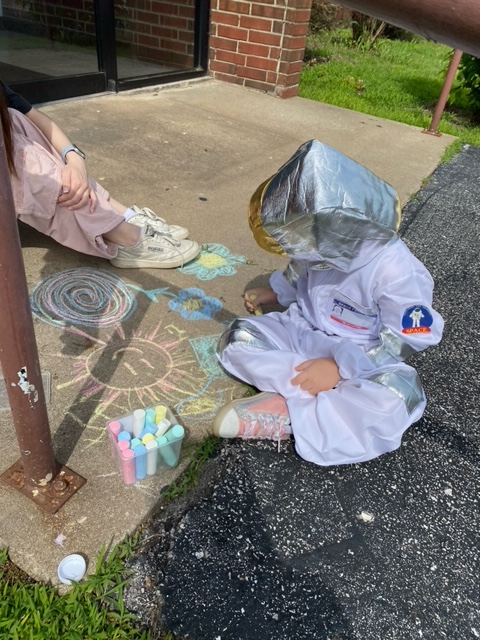
Discrete Trial Training
Discrete trial training (DTT) is a fancy way of breaking down a complicated task into a series of more manageable steps. It’s designed to help individuals learn new skills. Each “trial” in DTT consists of clear instructions or questions from the therapist, followed by the child’s response, and then immediate feedback such as positive reinforcement, such as praise or a reward if they perform the task correctly, or guidance on how to correct their response for next time.
The repetitive nature of DTT, with its focus on one small task at a time, helps reinforce a child’s learning and build confidence. DTT is particularly effective for teaching foundational skills such as communication, social interaction, and academic tasks.
Example of Discrete Trial Training
Consider a young child learning to identify colors. The therapist might start by showing the child a red block and saying, “This is red. Can you show me red?” If the child points to the red block correctly, they might receive a sticker or verbal praise as a reward. If they choose the wrong color, the therapist gently corrects them, repeating the trial until the child consistently identifies red. Once the child masters this step, the therapist moves on to the next color, gradually expanding the child’s knowledge through consistent, targeted tasks.
This lets a therapist tailor individualized learning to each child because each trial is customized to the child’s pace and needs, making complex skills more accessible and achievable. There are clear expectations and immediate feedback, creating a positive and effective learning experience that helps children build a foundation of essential skills they can use in everyday life.

Natural Environment Training
Natural environment training (NET) focuses on teaching skills where a child learns the best, making learning more meaningful and directly applicable to real-life situations. Unlike the structured, repetitive format of discrete trial training (DTT), NET is more flexible and child-led, with learning opportunities arising naturally during everyday activities.
The therapist follows the child’s interests and uses these moments to teach new skills so that the lessons are relevant and engaging, which helps a child remember later. Using a natural environment reinforces learning by integrating it into the child’s daily life, making it easier to expand these skills into different situations.
Example of Natural Environment Training
Think of this hypothetical scenario: A child is learning to communicate their needs. Instead of practicing this skill in a classroom setting, the therapist might use snack time as a natural opportunity for learning. If the child reaches for a cookie, the therapist might prompt them to say “cookie” or use a sign or picture to request it. If the child successfully communicates their request, they immediately receive the cookie, reinforcing the connection between the behavior and the reward.
This real-world context helps the child understand the purpose of communication, making it more likely they will use this skill in other situations, like asking for a toy or requesting help. NET’s focus on learning in the natural environment makes it an effective and practical way to teach skills directly relevant to the child’s everyday life.
Because these tasks are led by the child’s behavior, NET ensures that skills are not only learned but also used and reinforced in the real world, promoting independence and confidence in a way that feels natural and enjoyable for the child.

Pivotal Response Treatment
The goal of pivotal response treatment (PRT) is to make broad improvements in someone’s behavior and learning by focusing on pivotal skills. This therapy enhances core areas such as motivation, social interaction, and communication. By addressing these pivotal skills, the therapist seeks to create a ripple effect, leading to significant, widespread improvements in other areas of development.
PRT is highly flexible and child-centered, often integrating play and natural interactions to make learning engaging and meaningful. Scenarios for PRT are just like every other part of ABA therapy in Springfield, MO, where we customize learning to a child’s unique needs.
Example of Pivotal Response Treatment
Let’s say a child has difficulty starting conversations with peers. In PRT, the therapist might focus on improving the child’s motivation and social engagement as pivotal skills.
During a play session, the therapist could use the child’s favorite toys to encourage interaction. If the child starts a conversation about the toy, even if it’s just a simple comment, the therapist provides positive reinforcement, such as praise or a small reward.
The therapist might also model how to ask questions or make comments, giving the child opportunities to practice these skills in a natural and supportive setting. PRT helps the child become more comfortable and effective in initiating and maintaining conversations in this hypothetical scenario. The therapist will continue to monitor the child’s behavior to look for signs of improvement.
We can combine various types of treatment methods into a single session. For instance, a therapist can use a PRT where the child feels most comfortable, such as during playtime, taking a walk outdoors, or in whatever natural environment the child thrives in.
Verbal Behavior Intervention
Verbal behavior intervention (VBI) focuses on teaching communication skills by emphasizing the function of language rather than just its form. This method relies on the idea that language is a tool for achieving specific purposes, such as requesting items, gaining attention, or expressing needs. By focusing on what the speaker wants to achieve, this type of therapy VBI helps individuals learn to use language more effectively and meaningfully in everyday situations.
Example of Verbal Behavior Intervention
For example, consider a pre-K child playing with blocks. The child reaches for a block that is beyond their reach. The therapist might identify that the child struggles with making requests. The therapist would prompt them to use a phrase like “Help, please” instead of just pointing or crying.
When the child attempts to use the phrase, the therapist immediately provides assistance and praise. This positive reinforcement helps the child understand that using words can effectively achieve their goals. Over time, VBI teaches the child not only to make requests but also to use language for a variety of purposes, such as asking questions or making comments.
Again, we teach verbal skills in ways that are practical and relevant to the child’s individual needs. The goal here is to help children become more effective communicators, which enhances their ability to interact with others and navigate daily life.

Token Economy Systems
Token economy systems are a structured behavioral management tool that reinforces positive behavior and motivates individuals. The concept is straightforward, much like adults who go to work to earn money as an income. Children earn tokens or points for displaying desired behaviors, which can later be exchanged for rewards or privileges.
This method leverages the power of immediate and tangible reinforcement to encourage kids to learn new behaviors and build new skills. Token economies are versatile and can be tailored to suit various settings, including home and the classroom.

Example of a Token Economy System
This is an example of what we did at our Springfield location. Some of the kids we see learned how to bake cookies and make Kool-Aid as part of their ABA therapy in Springfield, MO. So, we developed a token economy system where we gave the kids the My World money. They would go up to the older children who baked the cookies and ran the bake shop, give them the currency, and they would receive their cookies and Kool-Aid.
In a more structured setting, a child might earn a token, sticker, or fake currency for each instance of positive behavior, such as completing homework or cleaning their room. After collecting a certain number of tokens, the child can exchange them for a reward, like extra playtime or a small toy.
This system provides clear, immediate feedback for good behavior and offers a concrete incentive for maintaining it. The currency of this economy is also physical, which makes these types of lessons very practical and real. Over time, the child learns to associate positive behavior with rewards, which helps reinforce these behaviors and makes them more likely to continue.
Token economy systems are effective because they offer a visual and motivational way to track progress and celebrate successes. Earning a token is the immediate positive reinforcement. Showing that the tokens add up over time imparts a lesson about how smaller tasks lead to bigger goals. The overall aim of a token economy system is to promote positive behaviors, ultimately fostering a more productive and encouraging environment.
Again, we can combine a token economy with a natural learning environment or any of the techniques we use in ABA therapy in Springfield, MO.
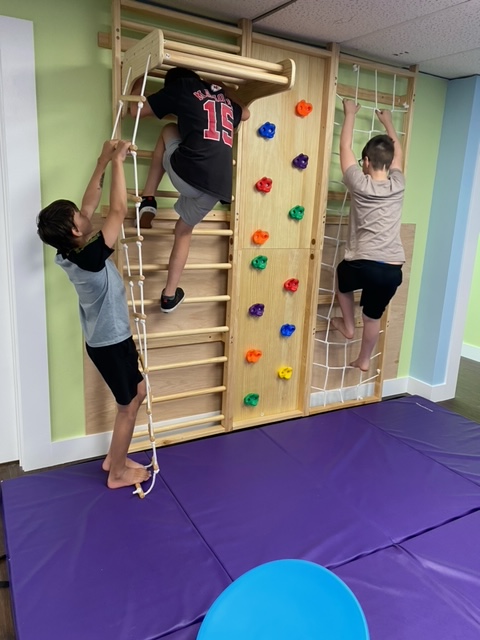
Social Skills Training
The goal of social skills training (SST) is to enhance and develop a child’s ability to interact effectively with others. SST focuses on teaching a range of behaviors, from basic communication and turn-taking to more complex skills like understanding social cues and building relationships.
A therapist might start with structured lessons and role-playing activities before going to a natural learning environment, allowing kids to practice and refine their social skills in a supportive environment. A therapist will turn social interactions into teachable components to help children learn how to navigate various social situations more successfully.
Example of Social Skills Training
Perhaps a child struggles with making friends at school. A therapist could use role-playing exercises where the child practices greeting others, asking questions, and showing interest in their responses.
For example, a child might rehearse saying, “Hi, my name is Alex. What’s your favorite game?” Meanwhile, the therapist serves as the peer. The child would then respond to the peer’s answer with a follow-up question or comment, like “Show me how to play checkers!”
This practice helps the child learn how to engage in a conversation and build connections with others. Positive reinforcement, such as praise or small rewards, can be given to encourage the child and build their confidence.
Having conversations and making connections with peers their own age can help alleviate fear, anxiety, and loneliness in kids while making them better communicators.
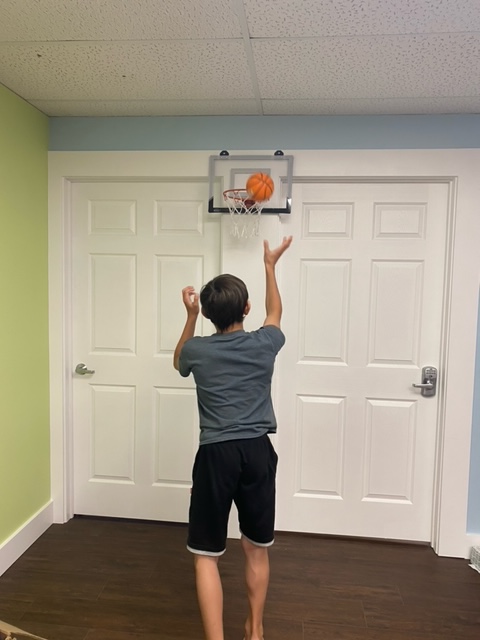
Measuring Success in ABA Therapy
Measuring success ensures that our ABA therapy is effective and that individuals are making meaningful progress. Therapists use a variety of methods to track and assess improvements in behavior, skills, and overall functioning.
We will set clear, measurable goals, collect data on behaviors, and analyze this data to evaluate the impact of how we work with each individual child. This data-driven approach ensures that therapy is not only tailored to the individual’s needs but also adjusted based on their progress and evolving goals.
Direct Observation
For example, a therapist notices that a child is shy about making eye contact during conversations. The therapist would start by setting specific, measurable goals, like increasing the duration of eye contact from a few seconds to 10 seconds.
During therapy sessions, the therapist would observe how the child maintains eye contact during conversations and interactions. How often does the child look away and engage in another activity? Does something draw the child’s attention away? Is something internal or external causing the child to turn to something more interesting?
Progress Monitoring
The therapist systematically records how often and how long the child maintains eye contact during interactions. This data is then reviewed periodically to assess whether the child is meeting their goals and to determine if the current strategies are effective.
If the data shows significant progress, the therapist might introduce more advanced social skills or refine the existing goals. Conversely, if progress is slower than expected, the therapist may adjust the approach or try different techniques to better support the child’s development.
Behavioral Improvements
Noticing and recording behavioral improvements are more than just attaining a goal. It’s marking progress toward retaining and mastering certain skills. Maintaining eye contact for 10 seconds is a goal to try to achieve better social skills.
Over time, say after three sessions, a child learns to maintain eye contact with a peer for 10 seconds. The next step might be to initiate a conversation. Or, perhaps, the child initiates a conversation on their own after learning to maintain eye contact for a longer time.
Another thing to keep in mind is that all therapy sessions and lessons learned are cumulative and complement each other. For instance, a child might learn how to organize colored blocks into a simple building during a play therapy session. Three months later, after learning how to maintain eye contact with someone for more than 10 seconds, the child might ask, “Do you want to make a building out of red blocks?”
Skill Acquisition
As we stated, we might use smaller tasks to help children learn various skills. The goal of skill-building is to foster independence.
For example, if a child is learning to dress independently, the therapist might start by teaching simple steps like putting on a shirt. The process involves smaller components, such as pulling the shirt over the head, inserting arms into sleeves, and adjusting the shirt to fit properly. The therapist uses repeated practice and positive reinforcement to encourage the child to master each step. As the child becomes proficient, the therapist gradually introduces more complex tasks, such as buttoning or zipping, until the child can dress independently.
As the child progresses through and masters various smaller tasks, we monitor progress to determine the effectiveness of our therapy sessions. Smaller therapy sessions over time build skills, and acquiring these skills has a cumulative effect that improves a child’s overall quality of life. Skills, in larger settings, can apply to many types of scenarios, even though a therapist might use a specific task to accomplish a certain behavior. Learning how to dress independently might lead to learning how to gather food from the refrigerator or make a bowl of cereal.
Reduction in Challenging Behaviors
Positive reinforcement and learning skills can reduce challenging behaviors. Think of this process as renovating a room in your home. To refurbish the room with bright, new things, you need to remove the old things first. The transformation makes the room more enjoyable, more functional, and better for everyone in the house.
Reducing challenging behaviors works in much the same way. Our goal is to replace potentially negative, challenging behaviors with positive ones. A child’s new behaviors would represent the shiny new furniture in the renovated room rather than the old, challenging behaviors that were the worn-out furniture.
Just like renovating a house, it takes a process to modify behavior. But the results are well worth the effort.

Family & Caregiver Involvement
ABA therapy is not just about what happens during sessions with a therapist. It’s also about what occurs at home, in school, and in the community. Families and caregivers are integral to ensuring that the strategies and techniques learned in therapy are consistently applied in everyday life. Families and caregivers create a more cohesive and supportive environment that can significantly enhance a child’s progress.
Perhaps the most important reason why families are important to a child’s ABA therapy is trust. Kids trust their parents. Kids know that they have the freedom to be whoever they want to be in a loving, supportive, and nurturing environment at home. Sometimes, home life is not perfect. Children pick up on stress, feelings, and emotions very quickly in the household. But, in general, children trust their parents to do what’s best for them. That’s why ABA therapy principles at home are vital to a child’s development.
Consistency Is the Key to a Child’s Development
Consistency across different situations and environments helps your child generalize the skills they learn in therapy, making them more effective and long-lasting. Another benefit of having parents, families, and caregivers part of the process comes from providing valuable insights into the child’s behavior and preferences, allowing the therapist to tailor the therapy to the child’s unique needs.
Empowering Families & Caregivers
Participating in ABA therapy empowers families and caregivers with the tools and knowledge to better support their child’s development. They learn how to use evidence-based strategies to manage challenging behaviors, promote communication, and encourage social skills. Everyone involved will gain a deeper understanding of the child’s needs and strengths, leading to more positive interactions and a stronger family bond.
Building a Supportive Environment
A child’s success in ABA therapy is greatly influenced by the environment in which they live and grow every day. When families and caregivers are involved, they help build a supportive and nurturing environment that extends beyond the therapy sessions. This holistic approach ensures that the child is surrounded by people who understand and support their growth, leading to more meaningful and sustained progress.
Choosing the Right ABA Therapist in Springfield, Ozark & Joplin
We strive to create a fun, kind, compassionate, and inclusive environment where your child will feel welcome. We believe that every child deserves to live comfortably in their world.
To learn more about our services or answer additional questions, contact us through our website or call (417) 818-5784 today. We have offices in Springfield, Ozark, and Joplin, Missouri.
